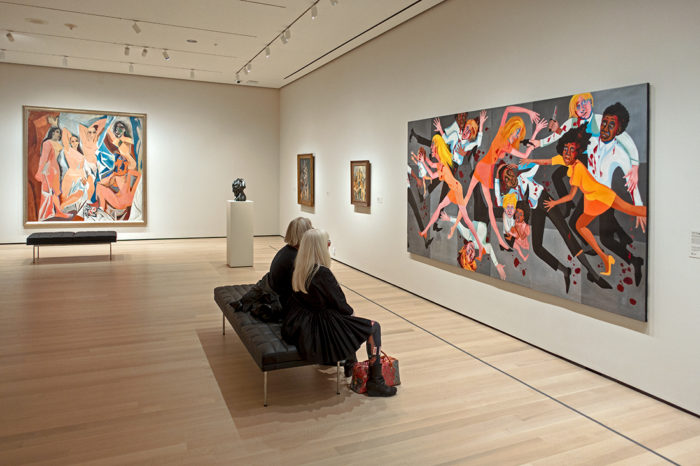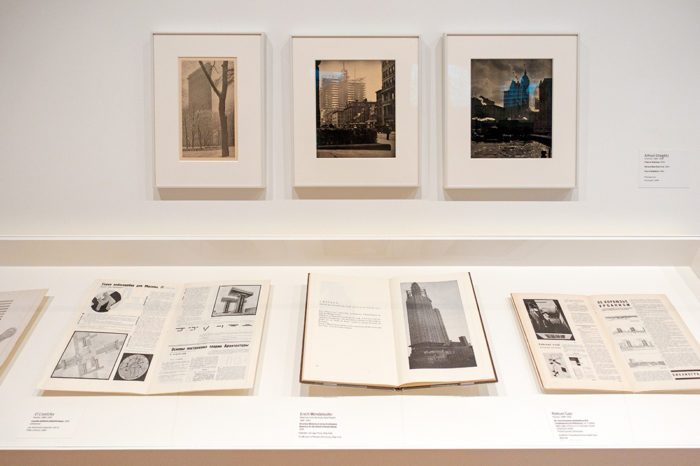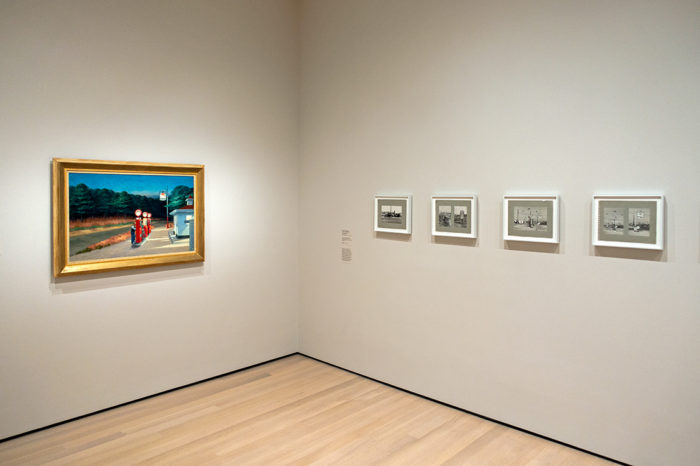
The Museum of Modern Art — Picasso and Ringgold — © Brian Rose
The Modern’s core collection of paintings from Van Gogh to Cezanne is presented in the newly renovated museum more or less as it was before, with the grand procession leading to Les Demoiselles d’Avignon by Picasso, a painting I have always regarded as one of the most radical breaks in the history of art. It remains a shocking presence — formally, conceptually, psychologically. Adjacent to the Picasso in the same gallery is a larger canvas by Faith Ringgold vividly depicting a 1960s race riot loosely based on the composition of Guernica, the monmumental anti-war painting by Picasso that once hung in the museum.
It’s the first moment in the recently re-opened MoMA where the curators introduce a disjunction in the traditional narrative of the development of modern art. It’s intended — presumably — as a symbolic stand-in for Guernica and a signal of a more inclusionary attitude about race, gender, and politics. It’s the only non-Picasso in this particular gallery.

Stieglitz photos and architectural articles — © Brian Rose
The museum was often criticized in the past for presenting a canon of modernism that was white male and Euro/American-centric. While the path forward remains chronological, the curators have boldly mixed everything together. Photography, film, architecture, painting, and sculpture are all displayed in the same galleries. So, next to late 19th century paintings there is a wall of early photography. Below a series of Stieglitz images of Manhattan skyscrapers there are architectural journals from Germany and the Soviet Union, and in the same gallery, models and drawings of early 20th century skyscrapers. There are large video screens showing early silent films in the midst of paintings and photographs.
By breaking up the traditional silos and mixing and matching media, the curators are freed from the old constraints and can present a more diverse and discursive narrative of the development of modern art. That’s the idea, anyway. But the reality, for me, is that a team of curators has taken over the museum. Didacticism rules over discovery. Diversity overwhelms individual achievement. And one kind of orthodoxy has been replaced with another.

The Museum of Modern Art — Hopper painting and Burkhardt photos — © Brian Rose
Photography, in particular, is missing in action in the new Modern. One of the things that kept me going back to the museum was to visit the photography department where one could see the touchstones of the medium’s development, where individual exhibitions were often mounted adjacent to the permanent collection. That’s gone now. One has to navigate the entire museum to find the photographs on display. Something I have no intention of doing in the future. There are no architecture galleries either — a great loss.
I was enormously pleased, however, to see the series of Rudy Burkhardt photographs of the landscape of Astoria and Long Island City. This body of work, made in 1940 depicting vacant lots, gas stations and urban bric-a-brac, I have long regarded as important and largely overlooked. What I don’t need to see is a glowing Hopper painting of a gas station next to Burkhardt’s more astringent views of a similar scene. It’s a false equivalency, or at least a strained one.
While it’s true that photography and architecture — any of the various media — are not islands unto themselves, it is also true that each has its own history and its own unique integrity. The photography department of MoMA, a historically important entity, has been instrumental in bringing the medium into the mainstream of the art world. But it did that to a great extent by cultivating its own garden within the larger landscape. Technology and conceptual shifts in thinking about art have softened the garden boundaries for sure – photography is now cringingly referred to as lens-based art — but it would seem that the curators of MoMA by blurring all the lines, are diminishing everything. We are now in a multi-disiplinary world of competing narratives, and we are nowhere.
Going back to the Faith Ringgold painting adjacent to Les Demoiselles D’Avignon. I admire the intention, but I resist the heavy-handed curatorial statement behind it. I’d rather come across the Ringgold somewhere else in the museum — with the reference to Guernica in the caption — and be allowed to make the visual connection back to Picasso, back to the Guernica and its history in MoMA, on my own terms.